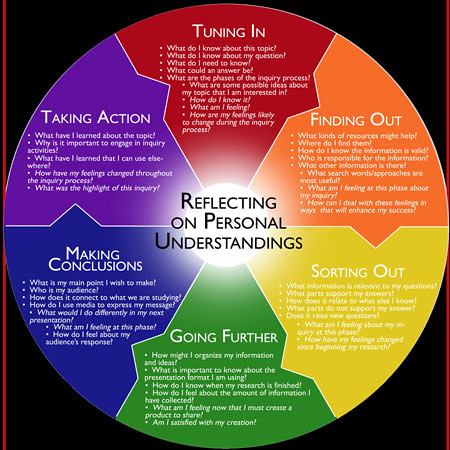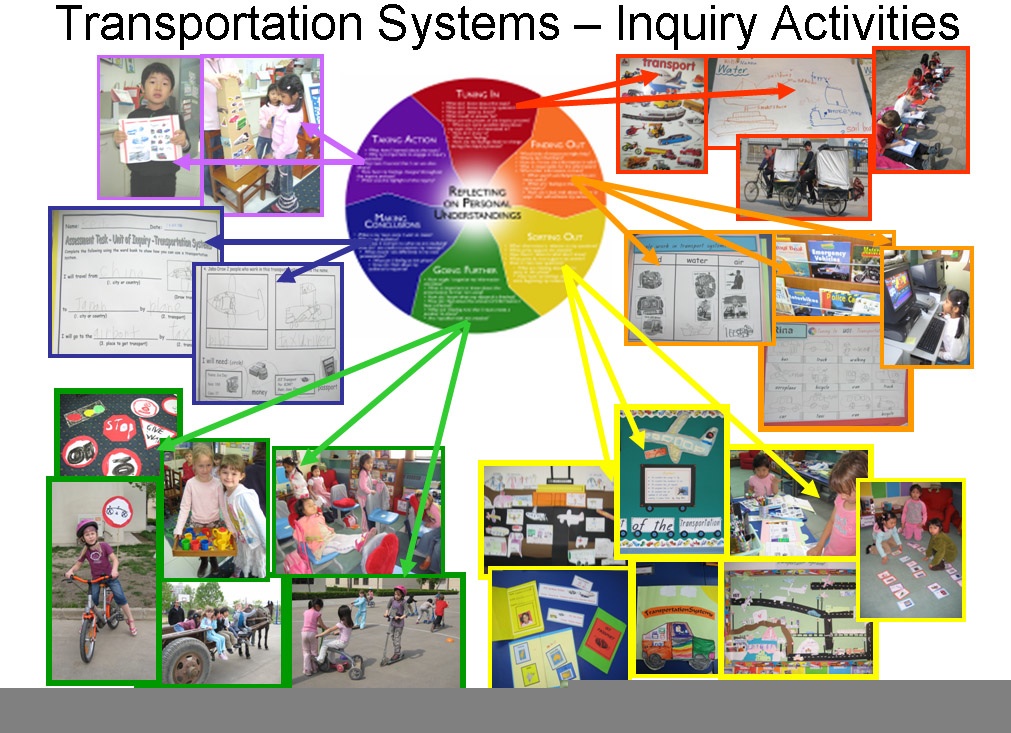 Photos from Flickr: istlibrary
Photos from Flickr: istlibraryThis week's treasures from Beth included an article she wrote last year for KnowledgeQuest called "Inquiry -- The Road Less Travelled" (Vol. 37, No. 1, Sept/Oct 2008) and some related photos. Unfortunately, the article is not yet available online, but should be eventually (and you could always write Beth and ask her to send you a copy.... )
In the article she describes the International School of Tianjin (an IBO school) and how the teaching team there has worked on improving inquiry in the classrooms and library, starting with a group exploration of inquiry and information literacy models.
The result was a model adapted from three major sources: the spiral of making personal meaning and understanding from Barbara Stripling (2003), guiding questions from Jennifer Branch and Dianne Oberg (2005), and language from Kath Murdoch (2005). The secondary school version is shown above, and they have a similar one with simplified questions for the elementary school.
I especially love how teachers use the model as a framework for documenting the units of inquiry. Here is an example from one of their Kindergarten classes (click to enlarge):

When Kath Murdoch came and worked with their teachers last year, they did a reflective exercise on their implementation of inquiry. Here is a partial summary of the remarks collected (also taken from the article):
They go on to create the list (below left).
Nothing radical there -- everyone struggling to improve their inquiry will recognize the items as common goals. Still it's good to be reminded of them.
Beth is also working on a wiki called Research Story, based on their inquiry model (which I trust she won't mind me sharing). Like all wikis, it's a work in progress. But I know it's made me want to go back and re-organize my own grade-level wikis around an inquiry model.
NB: The inquiry cycle image at the top was developed at the International School of Tianjin (IST) in 2007.
Sources for the image compilation-- as taken from the IST Flickr page:
Stripling, Barbara K. 2003. “Inquiry-Based Learning.” In Curriculum Connections through the Library, ed. Barbara K. Stripling and Sandra Hughes-Hassell, 3-39. Westport, Conn: Libraries Unlimited. Murdoch, Kath. 1998. Classroom Connections: Strategies for Integrated Learning. Ar-madale, Vic: Eleanor Curtain Pub.Branch, Jennifer, and Dianne Oberg. 2005 “Focus on Inquiry.” IASL. (accessed 6 May 2007).

